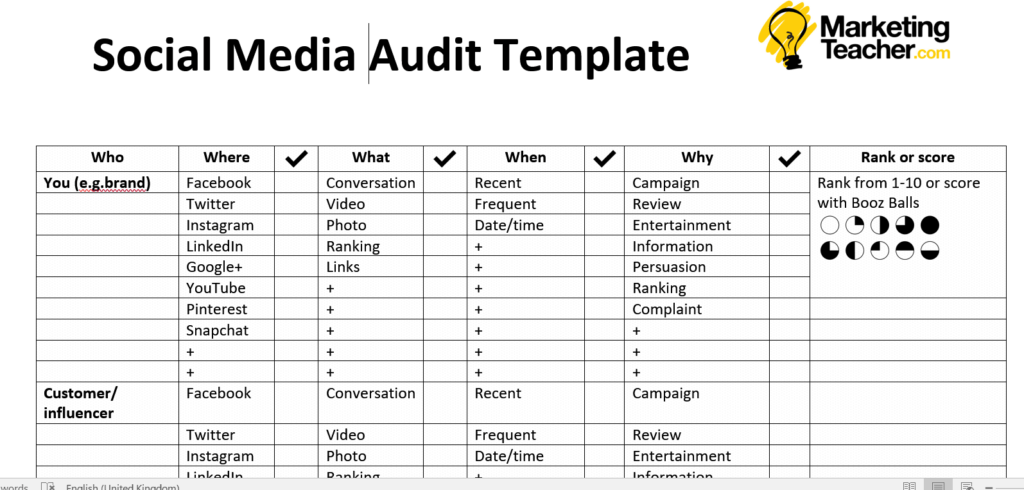Social Media Audit
The social media audit is an important part of the digital marketing planning process. Social media is an opportunity for consumers to generate their own content, and many of the top-ranking results of an Internet search will result in social media content – in relation to companies, brands, and products and services. User Generated Content (UGC), for example Trip Advisor, is a reliable way of Informing consumers’ decision-making.

Why do we need a social media audit?
So what a digital marketer needs is a tool to audit social media within the competitive environment, i.e. relative to competitors. The digital marketer will be trying to work out the best way to ‘feed’ the digital marketing funnel, and he or she will also need to monitor/measure any discussions about his or company. This is where a social media audit fits in.
It’s a systematic examination of social data to help marketers discover, categorize, and evaluate all the social talk about a brand. (Quesenberry 2015)
Keith Quesenberry developed a social Media auditing tool based upon the principle of the Five Ws, which is an approach used in journalism: who, where, what, when and why. If you add ‘How’ then your source is Rudyard Kipling’s poem, The Elephant’s Child:
I keep six honest serving-men
(They taught me all I knew);
Their names are What and Why and When
And How and Where and Who.
Let’s adapt the Five Ms to suit social media marketing, as does Quesenberry. This is Marketing Teacher’s adapted version.
1. Who is creating content using the digital medium? Is it you? Is it an influencer? Is it a competitor?
2. Where is the digital content? Which digital media platform is being used for content? Such as You Tube or Facebook.
3. What is the content on the social media platform? Is it textual content, and video, a photo, is it a story, etc? Does it use a ranking system? What is the feedback like?
4. When was the social media posted? How often does it get posted? What was its reach? Was it shared?
5. Why is the content generated? What was its purpose? Is it a campaign, a complaint or simply a user’s opinion?
The next step is to rank and prioritise your observations based upon these five criteria. How important is it to your social media marketing strategy? Here is Marketing Teacher’s adaptation of Quesenberry’s social media audit. For more detailed information, we recommend that you revisit the original article.
Here are some basic instructions for the social media audit:
1. Please print out the social media audit template from Marketing Teacher.
2. Complete there ‘who’ column. ‘You’ will be your business or your assignment organisation.
3. Then go through ‘where, what, when and why’ and insert the tick symbol (cut and paste the image) to select the appropriate element. You can tailor the audit to suit yourself with the ‘+’ symbol.
4. Finally rank or score the importance of each element using numbers 1-10, or Booz balls. That’s it! It’s time to do your own social media audit.
References
Quesenberry, K. A. (2015) Conducting a social media audit, Harvard Business Review, November 18th, 2015.
